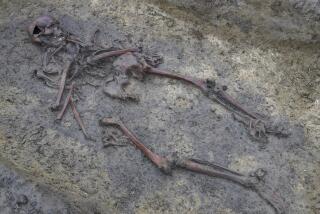Surnames Thwart Danish Research
Danes first came to America in the early 17th Century and joined the Dutch in New Amsterdam. In 1735, Danish converts to Moravian pietism established a mission at Bethlehem, Pa., and after 1750 many more Danes of that faith joined the predominantly German settlements in that locale. Other Danes migrated to America from the Danish West Indies (Virgin Islands) about 1776.
While many of our Danish ancestors arrived before 1860, the large-scale migration got under way after 1870 when agents promoting immigration--often hired by railroad, steamship or land companies--grew in number and importance. Between 1870 and 1920, 350,000 Danes arrived. Utah, because of the Mormon migration, had more Danish residents than any other state in 1860, but by 1870 Wisconsin took the lead, then Iowa between 1890 and 1920. However, in 1920 California became the state with the most Danish-born residents and has remained so ever since.
Denmark has four state archives, called Landsarkiver, located in Copenhagen, Odense, Viborg and Aabenraa (the latter also has the records of North Schleswig). However, using the LDS (Mormon) Family History Library in Salt Lake City and its hundreds of branches makes research easier than trying to obtain records from Denmark.
Danish research should include church records, census returns, military levying rolls and probate records. Censuses are available for 1787, 1801, 1834, 1840, 1845, 1850, 1860, 1870, 1880, 1890, 1901, 1906 and 1911. Danish censuses provide women’s maiden names, relationships, ages, titles or profession, marital status (first or subsequent marriages) and residence by parish, street name and number. These censuses can be found at the Family History Library by consulting its catalogue under Denmark/(County)/Census/(Year), after which the districts and parishes will be listed with an appropriate film number. Within each parish, families are located in a village ( by ), a farm ( gaard ) or a city ( stad ).
Copenhagen’s census records are filed under Kobenhavn/Kobenhavn/Census, but you will need to know the neighborhood and street. Streets are often mentioned in parish records, so check those first. Additionally, Copenhagen has Politiets Mandtaller (police census) taken yearly from 1866 to 1923. These are filmed alphabetically by street name, not by surnames.
Some Danish Lutheran parish registers date back to 1573, but most begin around 1645. They include births (christenings), marriages, engagements, burials, residences and occupations. Records after 1814 include confirmations. Another valuable source-- Til og Afgangslister (Arrivals and Removals)--was kept mostly in rural parishes with names of persons arriving in or leaving the parish, former and new places of residence, marital status, and sometimes date and place of birth and relationships.
Copenhagen’s registers of emigration (1868-1934) are on microfiche. They contain the name of the emigrant, occupation, place of residence, age, destination and date of embarkation. Microfilmed passport records for 1780-1920 also are available.
Many other records exist for Danish research. However, the most difficult aspect of Danish genealogy is the lack of permanent family names. As late as 1850 the majority of the rural population in Denmark did not use permanent family names. Sons were known by their father’s given name plus “ -sen “ and daughters by father’s name plus “ -datter .” Since patronymics change each generation, Danish research can be frustrating; plus, the number of names in actual use was small. It is easy to get confused and misidentify your Ole Hansen. Many Danes changed their names after coming to America, further compounding the problem.
For successful Danish research, learn the original form of your ancestor’s name, the precise age (preferably date of birth) and birthplace. You must know the name of the town or parish from which your Danes originated in order to trace them. Naturalization documents, old family letters and Bibles are the best sources for this information.
Myra Vanderpool Gormley is author of “Family Diseases: Are You at Risk?,” available from Genealogical Publishing Co., 1001 N. Calvert, Baltimore, Md. 21202, for $17.45 postpaid.)
More to Read
Sign up for Essential California
The most important California stories and recommendations in your inbox every morning.
You may occasionally receive promotional content from the Los Angeles Times.









